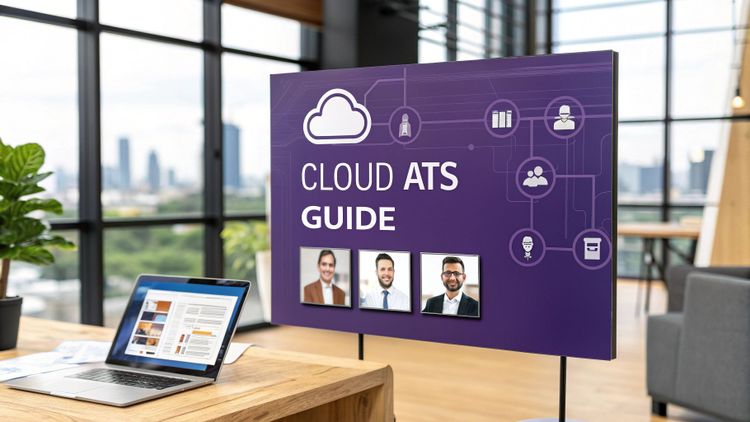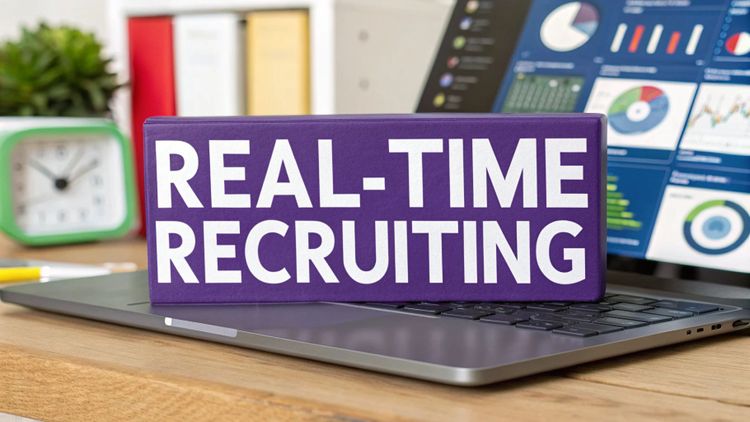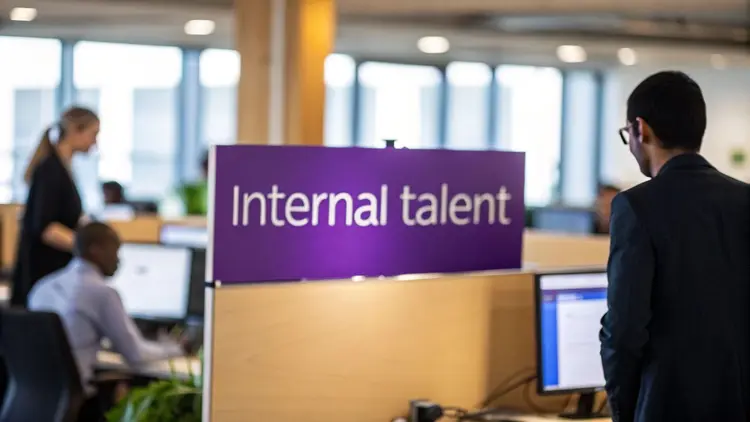Industry Trends
The Top Distribution Channels to Advertise Your Roles in the UK

According to the Recruitment and Employment Confederation (REC), UK employers face the worst shortage of job candidates on record.
Indeed, KPMG reports that 70% of companies they surveyed find it difficult to attract and retain employees following Brexit and the pandemic's influence over the way we work.
In order to tackle this issue, UK employers are increasing salaries, introducing flexible work options and adding more career development opportunities.
But what can you do beyond enticing candidates with new and better rewards to join your company?
In this article, we'll talk about advertising roles across the most relevant platforms for your specific needs. Casting a wider net when promoting new roles has several advantages:
- Using more channels gives you maximum exposure to candidates
- Different platforms serve different candidates and you'll end up with a more diverse group of applicants
- A higher quantity of applications leads to better data and improved decision-making in terms of which channels work best
Of course, costs and complexity increase as you utilise more channels to advertise your role. So in this article, we’ll look at how to advertise jobs widely while staying organised and achieving a disproportional amount of benefit compared to your costs.
Now, let’s cover the primary channels you should focus on for (almost) any role.
Job Description Template: Download and customise this job description template to save time and streamline your hiring process.
1. Your website
Even if you don't receive a lot of traffic on your website, it's still the best place to publish and host your new roles. Having a single entry point for all applications will streamline your hiring process and enable you to highlight your employer brand.
Almost all other distribution channels allow you to redirect candidates to your website so you're not losing out on potential applications. And if you already have a well-established website and brand, it can become one of your primary sources anyway.
That said, make sure your careers page is well designed with candidates in mind. It has to be easy to browse, skim text and filter vacancies based on things like job title and location.
Did you know SeeMeHired allows you to build a professional careers page and easily integrate it with your existing website? Learn more in a free demo.
2. Social media
Depending on the role you’re hiring for, social media may be a good and cheap way to advertise.
Here's a quick overview of the most popular platforms and how you can utilise each:
Facebook
The largest social media platform gives you plenty of reach, especially among millennials and people in the 40-60 age bracket. The killer feature here are Facebook Groups for jobs and vacancies. For example, this group in Edinburgh has over 90,000 members and dozens of jobs posted every day:

In addition, you can create dedicated job posts via your Facebook page - simply copy/paste your existing description to save time.
All in all, Facebook is a great option for roles that don’t require high qualifications and you need to fill the position quickly.
In recent years, Instagram has replaced Facebook as the go-to platform for younger people and brings an opportunity to highlight your employer brand - visually.
Instagram is based on photos and short videos (stories) that let you share behind the scenes footage, team building activities and other content to build your employer brand and showcase your company culture.
Twitter is a gold mine if you're looking for passionate and influential people to fill high-level roles. Especially for tech industries like blockchain and AI, you're likely to find the top minds debating and sharing their thoughts on Twitter - where you can also contact them directly.
Lastly, the elephant in the room is LinkedIn - the platform is practically built for connecting recruiters and job seekers so we created a complete guide to make the most of it. Overall, LinkedIn should be your go-to channel for ongoing, proactive recruitment and higher-level roles. We’d recommend setting aside an advertising budget too since LinkedIn can put you in front of the most relevant candidates available.
3. Job boards
Love ‘em or hate ‘em, job boards provide a convenient way for candidates to find and compare opportunities so they remain hugely popular.
Consider this: Indeed, the largest job board in the world, supplies as much as three-quarters of all interviews in the United States.
While job boards may come with some extra costs for advertising, they are hard to beat in the sheer number of applications - at least for the average position.
Recommended reading: The Top UK Job Boards and Hiring Platforms To Find Talent in 2022
4. Recruitment agencies
While they come with considerable costs, recruitment agencies could be a cost-effective solution when you hire for specific roles where they focus and already have a good network in.
Also, consider partnering with recruitment agencies when filling high-level positions where the right person can be a crucial factor to the success (or failure) of your whole company. Getting those extra few candidates can be vital in securing the right person.
5. Employee referrals
Studies show that new hires referred by employees tend to perform better and stay longer than non-referrals. In addition, there are other reasons why you’d want to tam your existing employees’ networks to find new hires:
- Culture fit - people in your company likely have friends that also fit your company culture
- Faster time to hire - referrals tend to learn about positions before they are public and often progress faster to the interview stage, leading to reduced time to hire
If you want to build or improve your employee referral program, we created a dedicated guide on the topic here.
6. Your existing candidate database
You likely have a base of people who applied to your vacancies before but for some reason didn’t make it - either they weren’t qualified or maybe went for another offer.
The good thing here is they already know your company and have made the decision to apply before. So it makes sense to revisit these candidates and shoot them an email if their profile fits.
For many, they may have new qualifications and experiences that move them up the ladder in terms of chances to get a role.
So always go through your database in case someone might be a fit.
7. Freelancer and skill platforms
Considering the shift towards remote work and accessing a global pool, we have to mention some of the biggest freelancer and skill platforms out there. Here are the ones you should keep in mind:
- Upwork and Fiverr for freelancers in a wide range of sectors
- Behance and DeviantArt for graphic designers
- GitHub and Stack Overflow for developers, engineers and tech-based talent
Finding the right platforms depends on who you’re trying to recruit - if you need to complete a one-off project instead of filling an ongoing role, these are the places to look at.
How to Manage Multiple Channels in One Place
While advertising far and wide has its advantages, it also comes with costs and considerable complexity.
Even if you minimise the advertising costs using a combination of proactive outreach via LinkedIn, niche groups and other free or cheap channels, there comes the need to manage everything.
If all goes well, you will have a good amount of candidates coming in per vacancy which means more job listings to manage across the different platforms you’re using. You will also have more applications to review, scattered communication and a harder time uncovering your best candidate sources.
This is where SeeMeHired comes into play. SeeMeHired is an applicant tracking system built to streamline your hiring process.
With SeeMeHired, you can create jobs, distribute via all popular channels, communicate with candidates, conduct video interviews and send job offers - all in one place.
If you want to learn more about SeeMeHired, book a free demo now.
Conclusion
In the current economic climate, it's important to advertise widely due to the effects of the pandemic and Brexit on the UK labour market.
Luckily, there’s a set of primary channels you should consider when advertising almost any role - starting with your careers page and going through major job boards, social media platforms and your existing candidate database.
As the complexity of managing multiple channels increases, you can turn to solutions like SeeMeHired to make the process easier.































